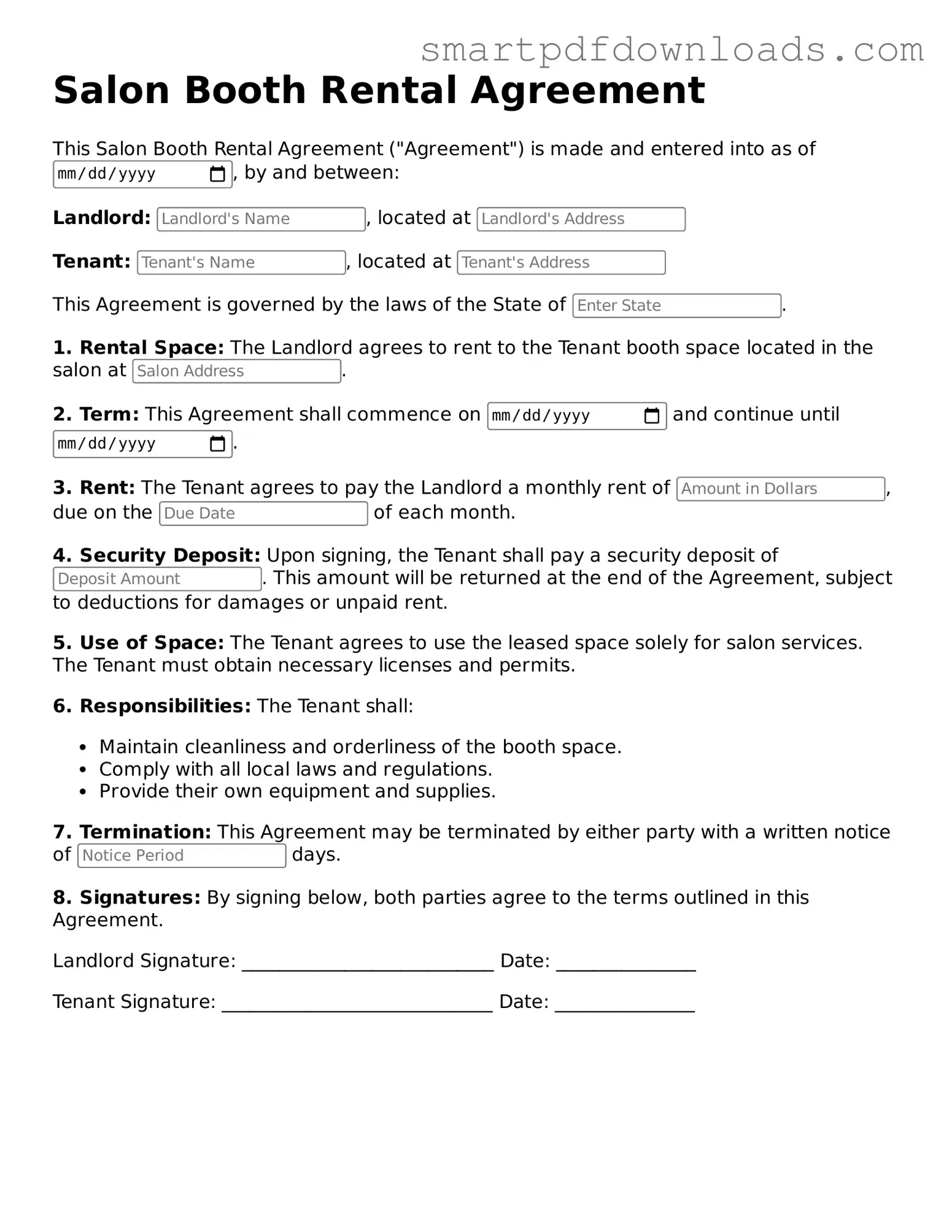Free Salon Booth Rental Agreement Form
The Salon Booth Rental Agreement is a legal document that outlines the terms and conditions between a salon owner and a stylist who wishes to rent a booth within the salon. This agreement establishes the responsibilities of both parties, including rental fees, duration of the rental, and other essential operational details. Understanding this form is crucial for ensuring a harmonious working relationship and protecting the interests of both the salon owner and the stylist.
Edit Salon Booth Rental Agreement Online
